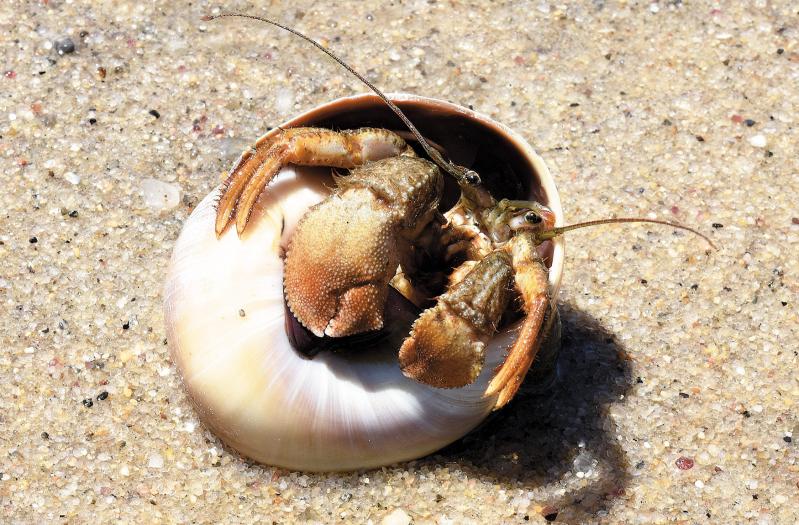Here it is half the year gone and I understand less about nature while studying it more. Friday evening was the perfect night for studying the flashes of the fireflies. It was calm, only partly cloudy, and gray tree frogs were singing from the wet spots.
The Elizabeth A. Morton National Wildlife Refuge is a stone’s throw from my house. Why not go there to get definitive answers about firefly issues that continue to haunt me? It was still twilight when I pulled into the parking lot at 8:29. Except for two unoccupied vehicles, I had the entire parking lot, about one and a half acres, all to myself.
The first firefly flash occurred at 8:38 from down low in the foliage at the edge of the parking lot. From then to 9:06 I recorded at least 104 flashes, not so different from the 127 flashes I counted in my front yard four days earlier between 8:30 and 9. I began to think that places of human habitation were more likely to support fireflies than vacant areas.
I was about to leave — the other two vehicles were gone — when I decided to stay a bit longer and move my car to a spot in the southwest corner from where I could observe the entire parking lot. No sooner had I taken up the new position than firefly mayhem broke out. In the next 50 minutes the place became a Fourth of July celebration, fireflies were flashing so frequently — 40 flashes per minute — for more than 2,000 over all, that I could barely keep track.
Then, as I thought of going home, the bombardment intensified even further, to about 250 flashes per minute, three-quarters of them at least 30 feet off the ground. While individual fireflies rarely flashed more than once when I first got there, now they were flashing at an unheard-of rate of five to six times per second. I could no longer keep up; the scientist in me became a mere dumbfounded spectator. I went home, my hypothesis about firefly activity completely upended. Nature baffles me now more than ever.
Patrice Dalton has been keeping track of the pair of new-to-the year bald eagles in the Accabonac nest. She took a nice pic of one flying and later observed on the shore. On Saturday, John Magnan sent me pictures of a fledgling bald eagle, entirely brown, that was perched on the roof of the White Sands Motel on Napeague. Later on, it was perched at 11 Leeton Road near the end of the driveway. It didn’t appear to be one of the two from Accabonac Harbor. Could it have come from an unknown nest on Napeague or perhaps, even, from the Gardiners Island nest? It could even be last year’s young. Keep your eyes peeled; the puzzle needs to be solved! And why was John able to walk right up to it and stand and watch and photograph without scaring it? Nature is more than puzzling.
My editor, Carissa Katz, saw what looked like an adult monarch butterfly on a milkweed plant at the Mashomack Preserve on Shelter Island on June 23. By that date the six or seven monarch butterfly caterpillars feasting on Matthew Galcik’s milkweeds in Montauk were gone, into new cocoons most likely, yet Matthew had yet to see an adult monarch as of last Thursday.
Another longstanding raiser and Long Island-wide counter of monarchs, the hydrogeologist Peter Dermody, hadn’t observed a monarch butterfly yet as of June 24. What happened in Montauk? Is it possible that an impregnated female monarch butterfly stopped at Mr. Galcik’s place in the thick of night, laid eggs on his milkweeds, and took off for Shelter Island and points north? We may have a new Montauk mystery on our hands, folks.
Jean Held has continued to dutifully keep track of life and artifacts at Havens Beach. Should you want to see the fine collection she has assembled, go to the Sag Harbor History Society’s museum and meeting place, on the west side of Main Street in Sag Harbor a few doors south of Apple Bank. One of her latest finds is a gigantic hermit crab occupying a large moon snail shell. As you probably know, the hermit crab starts out as a swimming larva that metamorphoses into a crab that finds a tiny unoccupied snail shell to start out in life. As it grows too big for its starter shell, it looks for a larger empty shell and so on and so on. The crab that Jean found in the moon snail was one of the largest I’ve ever seen. What happens if it grows too big for the moon snail shell and it has to find a big whelk shell, which then becomes the end of the line?
Just when you think you’ve seen and understood it all, you may find yourself not at the end of the line, but back at the very beginning. Nature cannot be tamed! It is bigger than life.
Larry Penny can be reached via email at [email protected].

